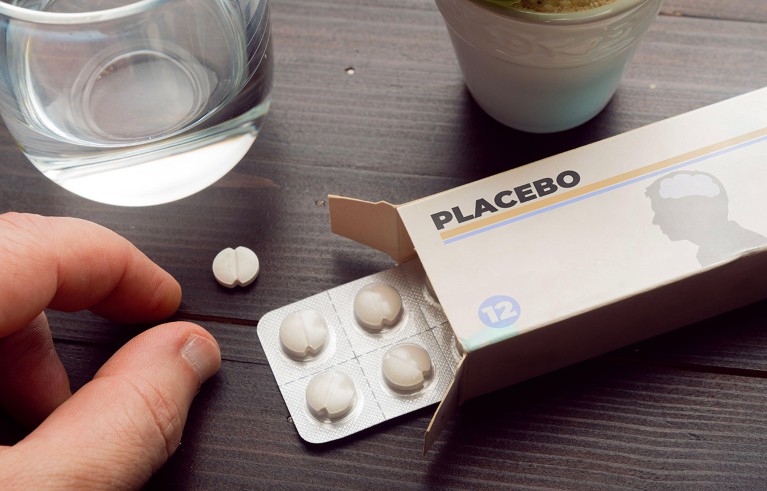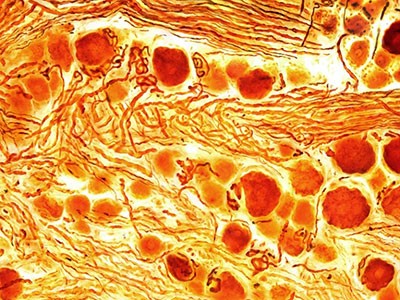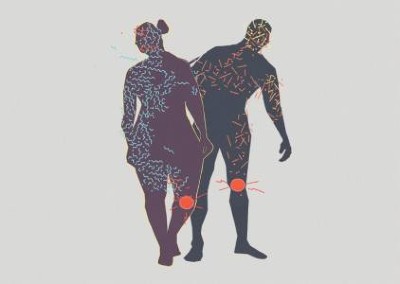
A pathway in the brains of mice might help to explain why placebos can have a painkilling effect.Credit: Cristian Storto/Alamy
When people take a sugar pill that they believe is a painkiller, it can lessen their experience of pain.
Researchers have long known about this phenomenon, called the placebo effect. But the biological mechanisms behind it have remained a mystery. Now, neuroscientists have identified brain circuits in mice that could help to explain how placebos can relieve pain.
Strong placebo response thwarts pain killer trials
In a study published today in Nature1, scientists traced the parts of the brain that were activated in mice conditioned to expect pain relief, mimicking how humans experience the placebo effect when given a pill with no active ingredients. They were surprised to see activity in the cerebellum and brainstem — parts of the brain that more often associated with movement and coordination than pain perception.
“We had no real insight into how [the placebo effect] was happening and if it was a real phenomenon,” says Clifford Woolf, a neuroscientist at Harvard University in Boston, Massachusetts. “I think this has helped us identify, indeed it is a real phenomenon.”
The findings might eventually lead to new ways to treat pain, says study co-author Grégory Scherrer, a neurobiologist at the University of North Carolina at Chapel Hill. “We might have a completely novel type of drug.”
Pain-relief pathway
Imaging studies in people have shown2 that placebo pain relief is associated with activity in the brainstem and a brain region called the anterior cingulate cortex.
To investigate this, Scherrer and his team developed an experiment to create a placebo-like expectation of pain relief in mice. Using two chambers, one with a comfortably warm floor and one with a painfully hot floor, they conditioned the animals to expect the pain of standing on the hot floor to ease when entering the cooler chamber. They then made both chambers painfully hot, and found that conditioned mice still showed a reduction in pain-related behaviours when they stepped onto the previously cooler floor.
Using live-imaging tools, the team identified groups of neurons that were active during the placebo experiment. One of these was in the pontine nucleus (Pn), an area of the brainstem that connects the cerebral cortex with the cerebellum and has not previously been associated with pain.
CRISPR-based gene therapy dampens pain in mice
To further understand the role of these neurons in pain relief, the authors measured the effects of blocking their activity. When their Pn neurons were inhibited, placebo-conditioned mice moving onto a hot floor that was previously cooler were quicker to perform pain-relief behaviours such as licking their paws, rearing up and jumping. Mice with activated Pn neurons took longer to lick their paws, “because it’s not that painful”, says Scherrer.
Follow-up analysis of 4,932 neurons from the Pn revealed that 65% had opioid receptors, which respond to endogenous pain-killing compounds — those made in the body — and are activated by powerful painkillers. The neurons with opioid receptors extended to three areas of the cerebellum, which was not previously thought to play a part in the expectation of pain relief. The researchers identified a group of Purkinje cells — one of the main cell types in the cerebellum — that became increasingly active during the placebo experiment.
“There are almost certainly endogenous opioids that are participating in this,” says Woolf.
New targets
The research could open up new avenues for understanding how existing painkillers work and discovering more effective ones.
Scientists could explore how to engage the neural circuit in the brainstem and cerebellum without relying on placebo pills. Future studies might find “a way that would make it more reliable [to] activate the body’s own control mechanisms that can suppress the experience of pain”, says Woolf.
Why the sexes don’t feel pain the same way
Understanding the brain circuits involved could also shed light on why some pain treatments, such as cognitive behavioural therapies and transcranial magnetic stimulation, actually work.
“The brain is a complicated haystack, and we’re often looking for a needle,” says Tor Wager, a neuroscientist who studies the placebo effect at Dartmouth College in Hanover, New Hampshire. This study “provides a new target that we can look for in human studies”.
Questions remain about what activates the placebo effect. “What we still don’t know is, why does it occur in some individuals and not others, and why it disappears over time,” says Woolf.




